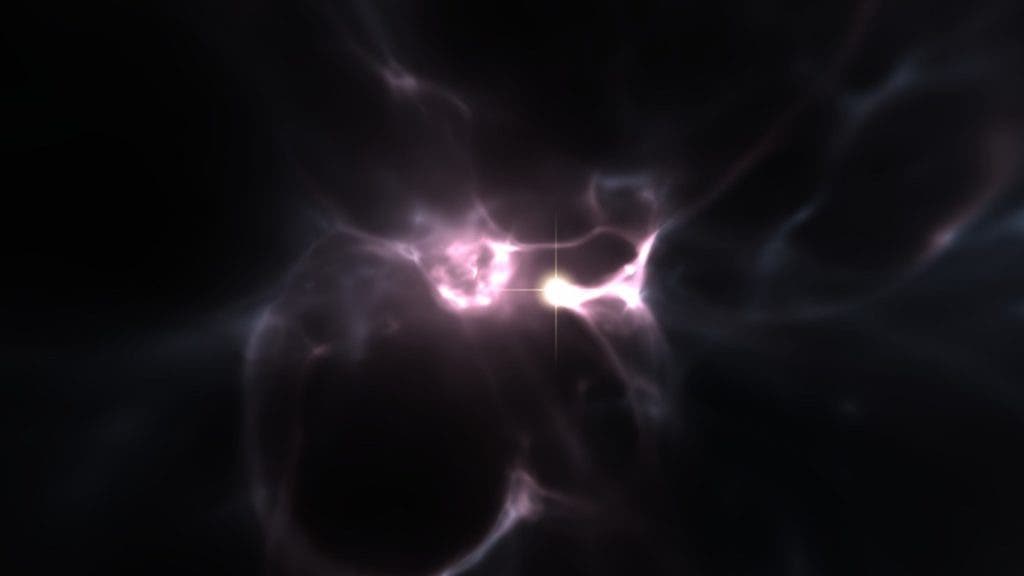Only 35,000 light-years away from Earth, astronomers have spotted a red giant star that was forged just a couple hundred million years after the big bang.

The recent discovery was made by astronomers led by Dr. Thomas Nordlander of the ARC Centre of Excellence for All Sky Astrophysics in 3 Dimensions (ASTRO 3D), who found a record-low amount of iron in a star located at the edge of the Milky Way’s halo. The red giant, unceremoniously called SMSS J160540.18–144323.1, has an iron content of just one part per 50 billion or 1.5 million times less than the sun.
“That’s like one drop of water in an Olympic swimming pool,” Dr. Nordlander said in a statement.
Why is this star so significant? After the early universe started to cool off, the only available elements were hydrogen, helium, and trace amounts of lithium. The earliest stars — let’s call them 1st generation — fused these light-weight elements inside their very massive and very hot cores. However, these stellar pioneers were very short-lived, quickly running out of fuel before going out with a bang, turning supernova. The massive explosion that signals the end of a star spews its forged elements across the universe, where they can be incorporated by new stars. Over the course of generations, increasingly heavy elements can be forged such as silicon or iron.
None of the first stars have survived, so a lot of what we suppose about them cannot be verified. However, there’s still a lot to learn from their surviving cosmic relatives. If a star has a lot of iron, scientists can infer that this star must have formed after a predictable number of stellar generations. For instance, based on its metal content, astronomers believe that the sun is about 100,000 generations away from the big bang.
“The good news is that we can study the first stars through their children – the stars that came after them like the one we’ve discovered,” said study co-author Professor Martin Asplund, a chief investigator of ASTRO 3D at the Australian National University.
Considering the record-low amount of iron found in SMSS J160540.18–144323.1, astronomers believe that it was formed after one of the first stars exploded, just a couple hundred million years after the big bang. Dr. Norlander and colleagues believe that the exploding star that seeded SMSS J160540.18–144323.1’s iron was only ten times more massive than the sun. It must have also exploded rather feebly so most of its iron and other heavy elements were pulled back into the core by the gravity of the remnant neutron star.
It’s remarkable to learn that our galactic backyard still houses stars from the earliest generations — although they might not last for long. The newly found star is a red giant, which means its at the very end of its life cycle before exploding in a supernova. In the future, astronomers hope to find more such second-generation stars that might tell us more about what the early universe looked like.
The study was published in the Monthly Notices of the Royal Astronomical Society.






